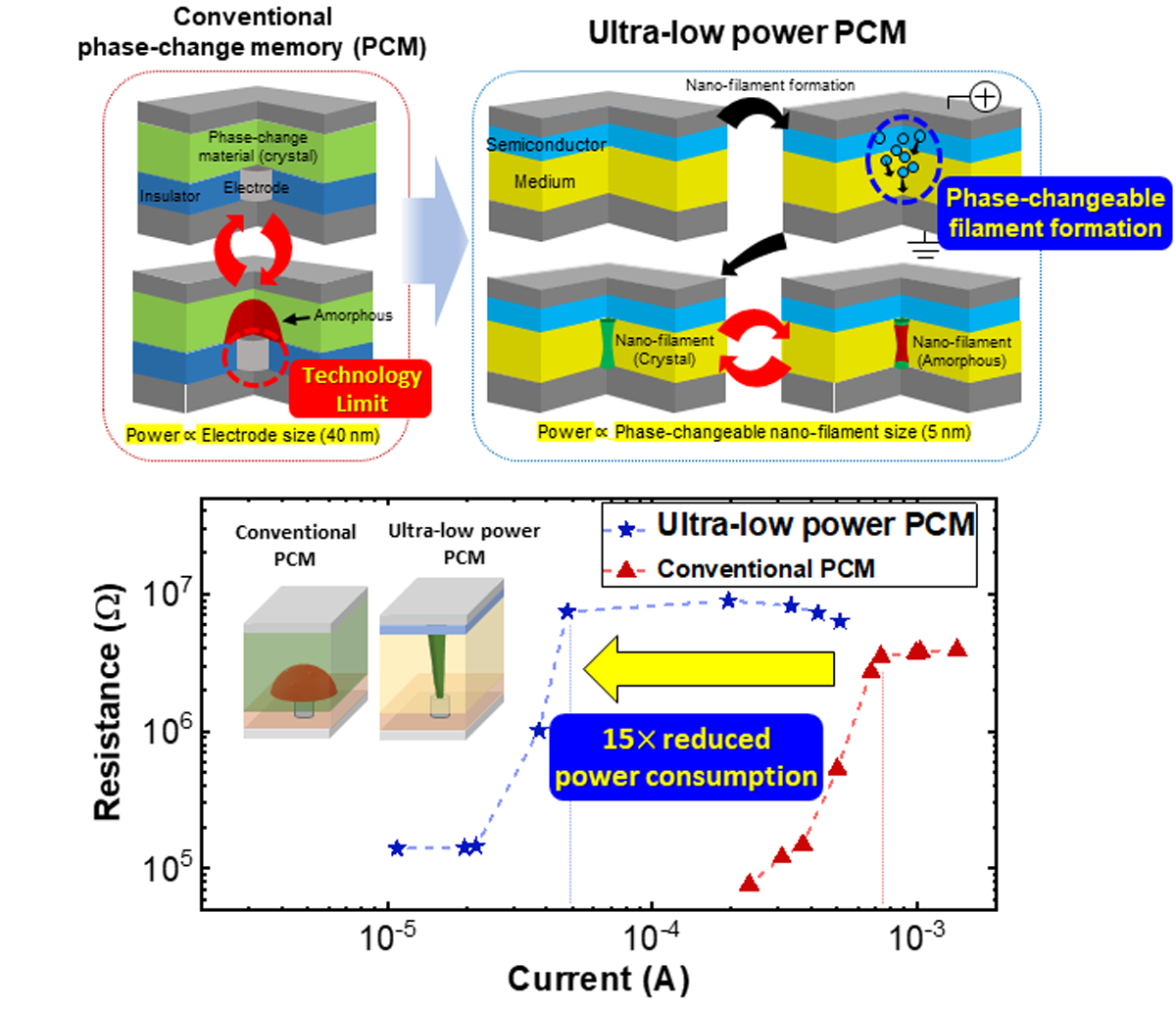Researchers at the Korea Advanced Institute of Science and Technology (KAIST) in South Korea have developed a new type of phase-shifting memory that does not have the drawbacks of previous iterations of this technology.
Phase Change Memory, or PCM for short, works by switching between two physical states: crystallized (low resistance) and amorphous (high resistance). It optimally combines the properties of DRAM and NAND flash memory.
DRAM is fast, but power-dependent, meaning that the data stored in it is lost when the power is cut off. NAND, which is used in SSDs, can retain data even when the power is turned off, but is slower than DRAM.
PCM is a fast and non-volatile type of memory, but traditionally expensive to produce and energy-intensive. Heat is required to melt the phase material into an amorphous state, which hinders energy efficiency. Previous efforts to address high power consumption have focused on reducing the physical size of the device using advanced lithography techniques. The improvements were nominal, and the increase in cost and complexity associated with manufacturing was not justified.
Prof. Shinhyun Choi and his team have developed a method to reduce only the components directly involved in the phase change process to create a phase change nanofilament. The new approach reduces power consumption by a factor of 15 compared to traditional phase change memory and is also much cheaper to manufacture.
The new memory retains many of the characteristics of traditional memory, such as high speed, large on/off ratio, small variations, and multi-level memory properties.
The researchers expect their findings to become the basis for future electronic engineering. The team’s research was published in the journal Nature in early April.
Source: TechSpot




Spelling error report
The following text will be sent to our editors: